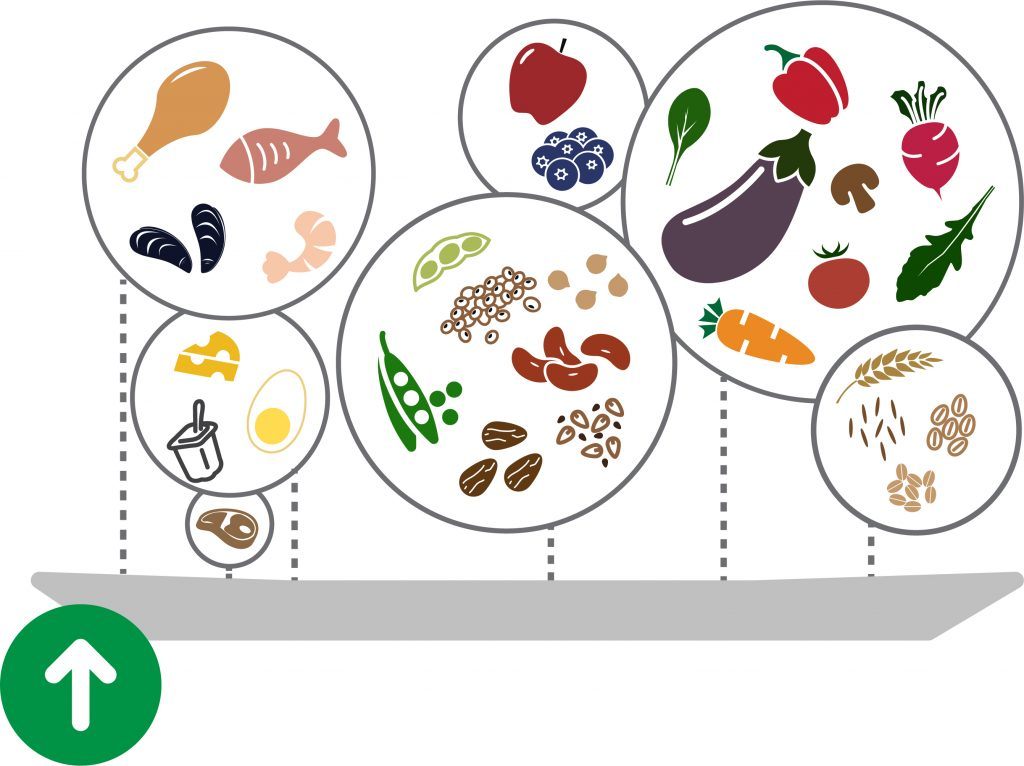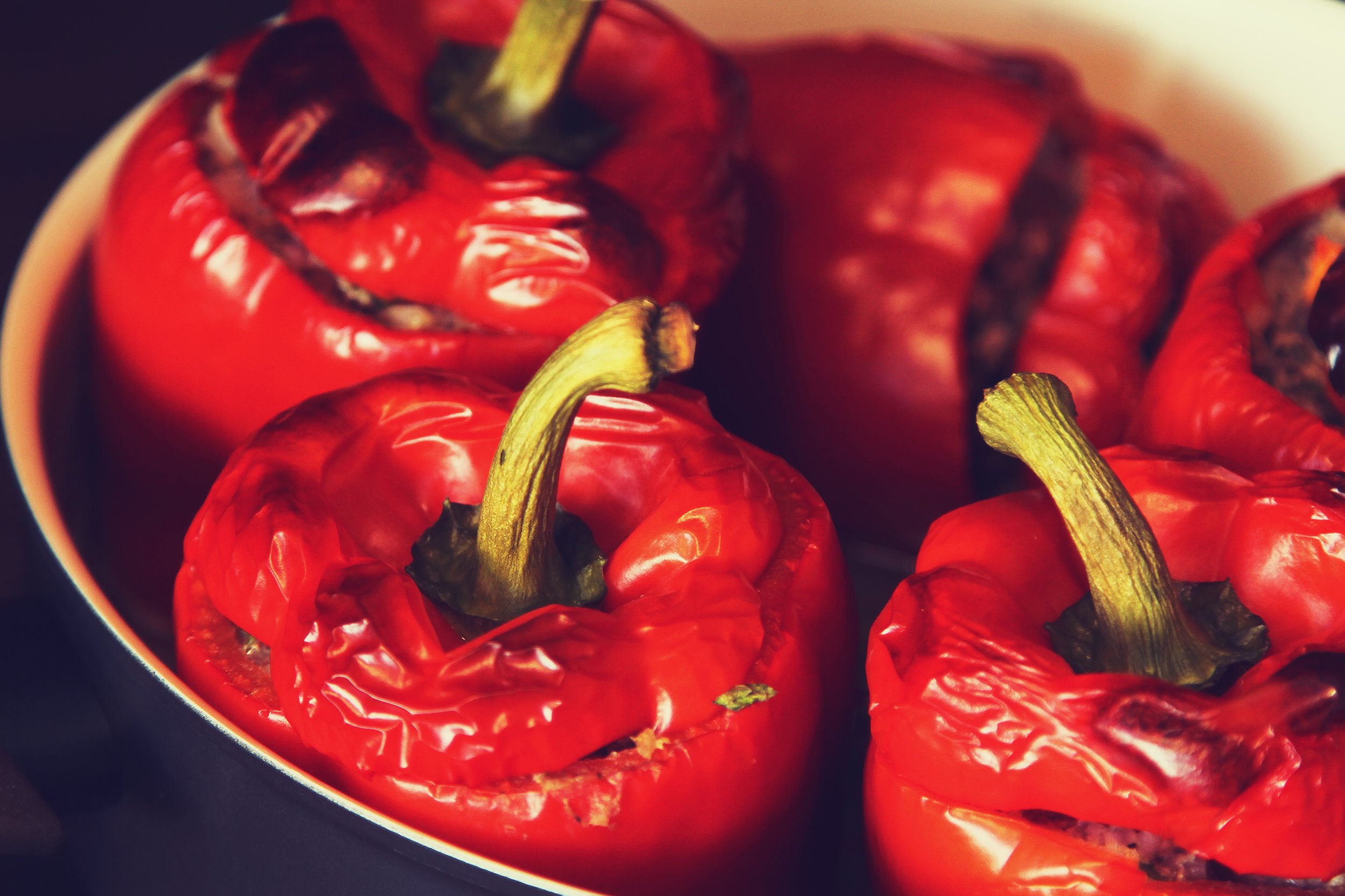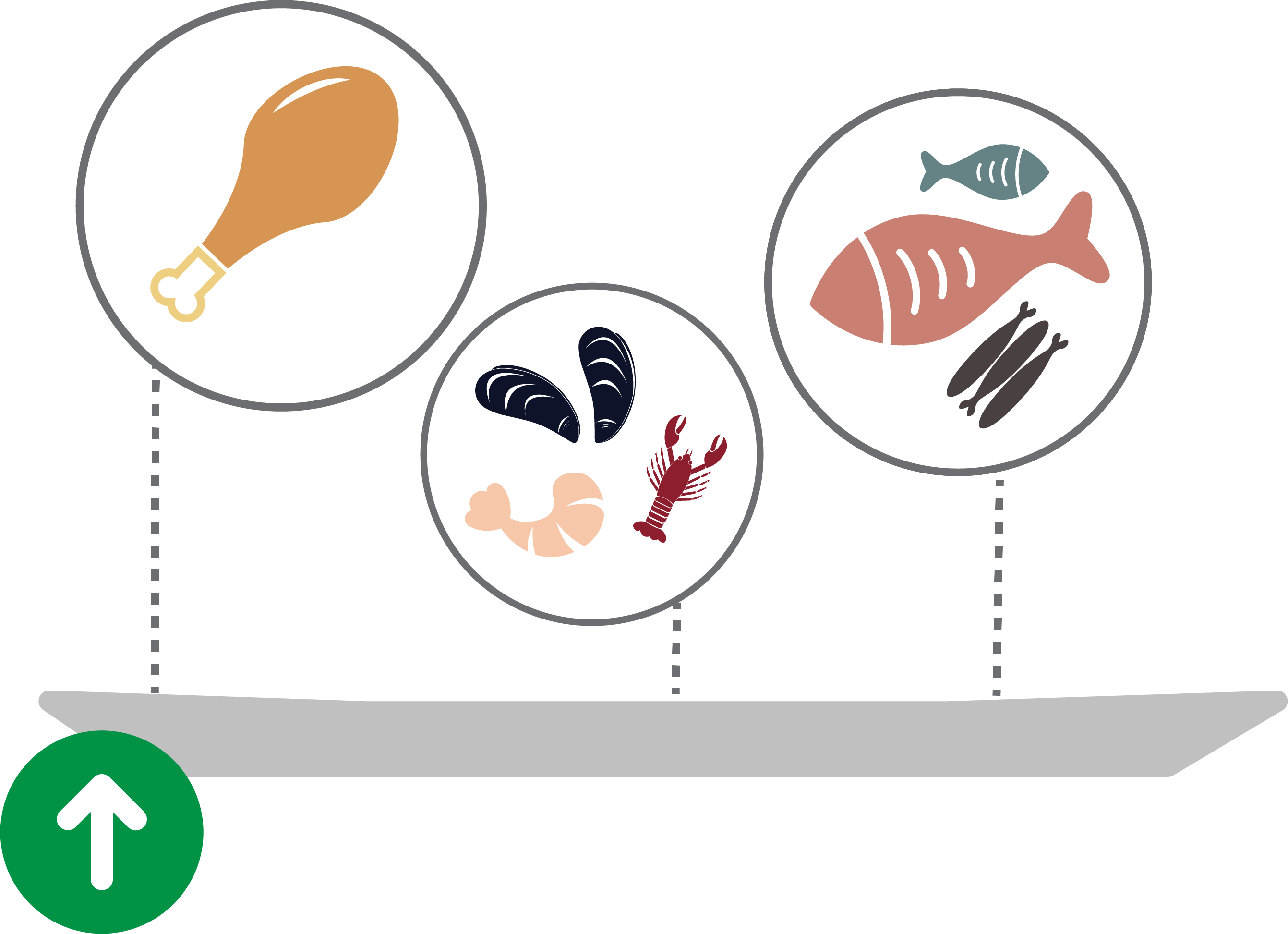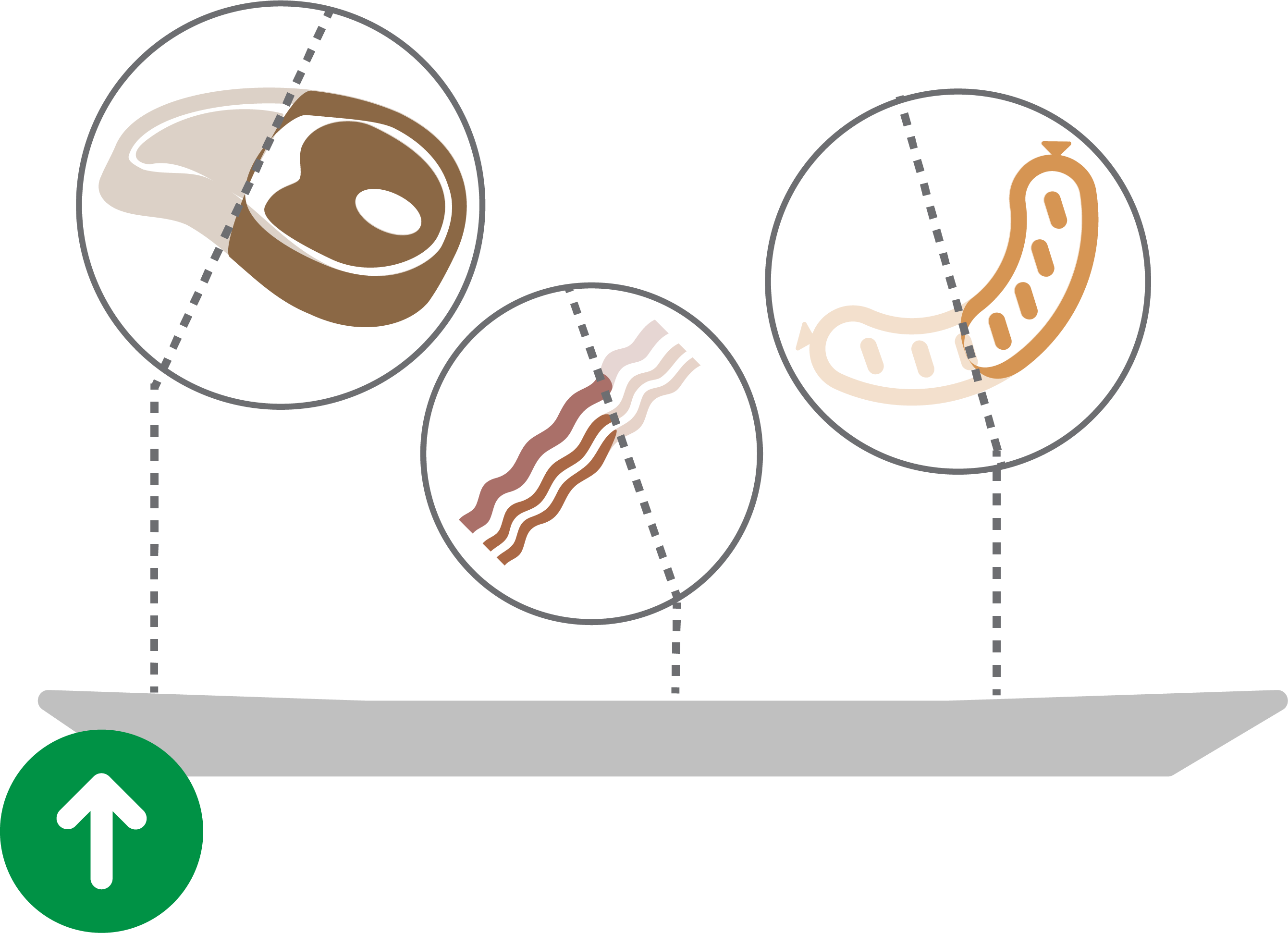 Elevate your plate: Reducing red meat in our diets can be a win for our own health and the health of the planet. If you’re not quite sure where to start, these strategies can help you cut-back the red meat while keeping your meals filling and flavorful.
Elevate your plate: Reducing red meat in our diets can be a win for our own health and the health of the planet. If you’re not quite sure where to start, these strategies can help you cut-back the red meat while keeping your meals filling and flavorful. On the dinner plate “stage,” we often think about animal-based protein as the “center of attention ” with everything else—like veggies—playing a supporting role. An easy (and often cost-effective) way to diversify your diet is to flip this old paradigm by reducing the portion of meat and other animal products, and sharing the spotlight with plant-based foods.
Start here:
This approach is all about variety! It boosts healthy plant-based foods, while still providing ways to incorporate some of your favorite animal-based foods. You can do this any number of ways, but here are a few ideas to get you started:
- Focus on hearty plant-based proteins, whole grains, and plenty of produce. Endless combinations of these foods can provide a filling foundation for your plate. For example:
- Legumes (like beans, soybeans, peas, lentils), nuts (like almonds, walnuts, and pecans), and seeds (chia, hempseed) can be satiating options of plant-based protein. Nuts and seeds also contain healthy fats, while legumes are full of fiber. If you’re skeptical, check out these cooking strategies for savory and hearty plant-based protein.
- Minimally processed whole grains can also be a source of protein and satiety. Brown rice is one option, but try a variety of grains for new textures and flavors: quinoa, farro, bulgur, buckwheat, and more.
- Fill half of your plate with vegetables and fruits, and incorporate a rainbow of colors: dark greens, reds, oranges, yellows, and even purple.
- For animal-based foods besides meat, eggs can be a good choice. Think beyond breakfast: hardboiled as a snack or chopped into salad; soft boiled and added to a soup; scrambled into a stir-fry; or fried sunny-side up and placed on top of roasted veggies, savory grains, and legumes.
- If you enjoy dairy foods, this approach is a great way to include them in moderation— good for both your health and the planet’s health (although not as much as beef, producing dairy foods also has a considerable environmental impact).
- You’re probably already practicing this when you incorporate a bit of sharp or flavorful cheese into a dish. For example, parmesan grated on top of a minestrone soup; or cubed feta in a Greek salad (not macaroni and cheese, cheeseburgers, and three-cheese pizza).
- While yogurt topped with nuts and berries makes a great breakfast, you can also try mixing a spoonful with herbs, spices, and olive oil for a quick and creamy dressing on warm whole grains.

- As mentioned, this approach can include meats—but just in much smaller proportions. Since meats are often sold at a higher price point, an added benefit is that you may get more “mileage” by cutting/slicing/shredding and using them in small amounts (rather than a single large piece per person).
- Poultry and fish are particularly good for this. Chicken and turkey can go further when it’s: used as a topping over a scoop of lentils and crunchy green beans, and drizzled with zippy mustard dressing; mixed into a veggie-packed stir-fry; or rolled into a wrap with hummus, sundried tomatoes, cucumbers, and olives.
- If you cook for multiple people, try roasting a whole chicken or turkey on a weekend and then slicing-up the leftovers to incorporate in any number creative plant-based dishes throughout the week.
- Leftover fish also works great as an addition to salads, paired with veggies for a fish taco filling, or scrambled with eggs and placed atop some whole grain toast for a savory breakfast.
- This approach can even make some room for red meats on occasion, with processed meats used sparingly. For example, rather than a whole burger patty of beef, you can blend-in “meaty” and umami-packed chopped mushrooms. Or, if you particularly enjoy the taste of bacon, you could consider using a slice to flavor the base of a soup where beans, grains, and vegetables provide the bulk of the protein.
- Poultry and fish are particularly good for this. Chicken and turkey can go further when it’s: used as a topping over a scoop of lentils and crunchy green beans, and drizzled with zippy mustard dressing; mixed into a veggie-packed stir-fry; or rolled into a wrap with hummus, sundried tomatoes, cucumbers, and olives.
Take it a step further:
Variety is a smart approach—but your meals don’t have to include meat or other animal-based foods in order to be tasty and satisfying. The plant kingdom offers plenty of options to choose from, and this next approach provides simple strategies to incorporate them into filling, delicious, and even budget-friendly dishes:

Prioritize hearty and savory plant-based preparations
See the tips.More plate upgrades:

Swap out red meat for healthier meats


